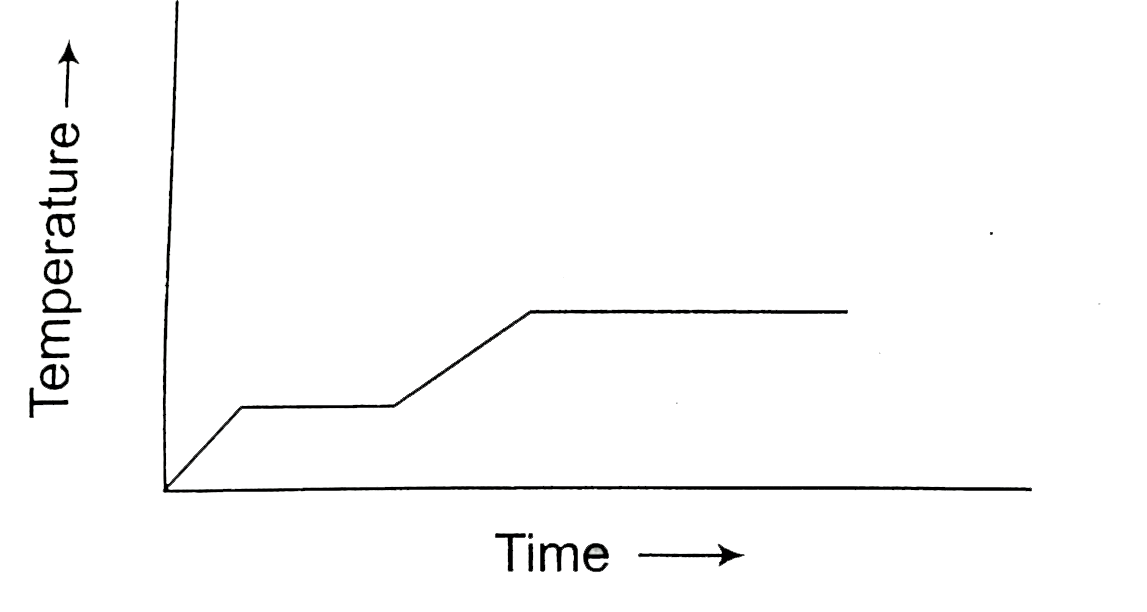Matter exists in two states - solids and liquids.
Step-by-Step Solution:
1. Understanding Matter: Matter is anything that has mass and occupies space. It can exist in different forms or states.
2. Identifying the States of Matter: The common states of matter are solids, liquids, and gases. Each state has distinct properties.
3. Analyzing the Given Statement: The statement claims that matter exists only in two states: solids and liquids.
4. Evaluating the Statement: This statement is incomplete because it does not include gases, which is the third state of matter.
5. Conclusion: Therefore, the correct answer is that matter exists in three states: solid, liquid, and gas.
Topper's Solved these Questions
- MATTERBOOK - ICSECHAPTER - MATTEREXERCISE - Exercises (Section I) Choose the correct option to fill in the blank
5 Videos
- MATTERBOOK - ICSECHAPTER - MATTEREXERCISE - Exercises (Section I) Match the following
1 Videos
- MATTERBOOK - ICSECHAPTER - MATTEREXERCISE - Exercises (Section I) Choose the correct option
5 Videos
- MAGNETISMBOOK - ICSECHAPTER - MAGNETISMEXERCISE - Picture Based Questions
12 Videos
- MODEL TEST PAPERS BOOK - ICSECHAPTER - MODEL TEST PAPERS EXERCISE - TEST PAPER II (SECTION II) Numerical questions
2 Videos
Similar Questions
Assertion : The HF−2 ion exists in the solid state & also in liquid state but not in aqueous state.
Reason : The magniture of hydrogen bonds among HF molecules is weaker than that in between HFandH2O.
View SolutionAssertion : The HF−2 ion exists in the solid state & also in liquid state but not in aqueous state.
Reason : The magniture of hydrogen bonds among HF molecules is weaker than that in between HFandH2O.
View SolutionNO2 and N2O4 are two forms of nitrogen dioxide. One exists in gaseous state while other in liquid state. The nature of NO2 and N2O4 forms are
View SolutionThe HFΘ2 ion solid state and in liquid HF but not in the dilute aqueous solution
HFΘ2 exists in solid state and in liquid HF because HFΘ2 ions are held together by .
View SolutionA substance 'X' having low melting point, does not conduct electricity in both solid and liquid state. 'X' can be :
View SolutionState whether the specific heat capacity of a substance remains the same when its state changes from solid to liquid.
View SolutionWith decrease in heat, solids change to liquids and liquids change to gaseous state.
View SolutionState which of the three states of matter i.e. solids, liquids or gases - have
a] No definite volume b] A definite shape c] High density e] No free surfaces f] Particles - which diffuse very easily.
View Solution
Heat is supplied to a certain homogeneous sample of matter, at a uniform rate. Its temperature is plotted against time, as shown Which of the following conclusions can be drawn?
(i) Its specific heat capacity is greater in the solid state than the liquid state.
(ii) Its specific heat capacity is greater in the liquid state than in the solid state.
(iii) Its latent heat of vaporization is greater than its latent heat of fusion.
(iv) Its latent heat of vaporization is smaller than its latent heat of fusion
View SolutionWhich of the following refers to the change of state from solid to liquid?
View Solution
